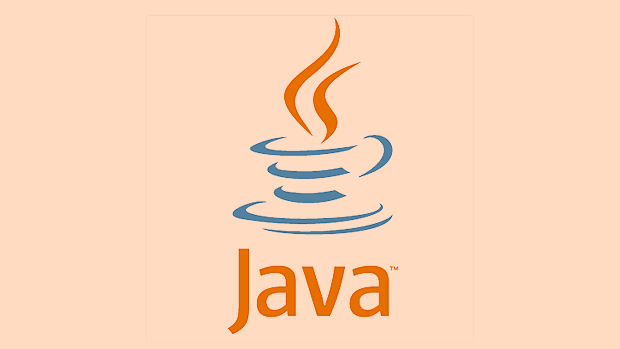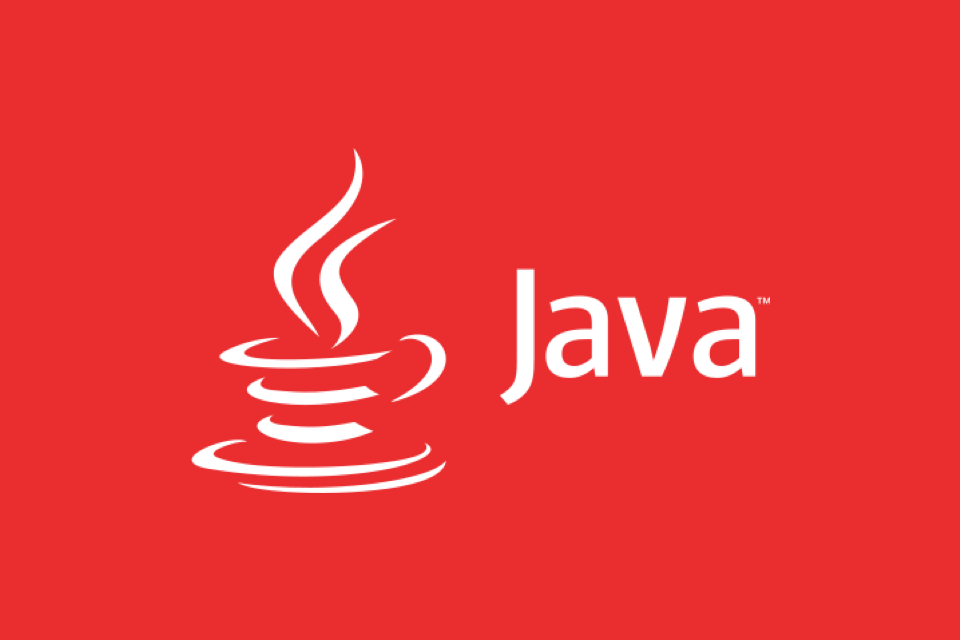Mastering Dependency Injection in Java with Spring and Guice
Aug 01, 2025 am 05:53 AMDependency Injection (DI) is a design pattern where objects receive dependencies externally, promoting loose coupling and easier testing through constructor, setter, or field injection. 2. Spring Framework uses annotations like @Component, @Service, and @Autowired with Java-based configuration via @Configuration and @Bean, supports component scanning, and emphasizes constructor injection, profiles, and modular configuration for enterprise applications. 3. Google Guice relies on modules extending AbstractModule to define bindings, uses Injector for object creation, supports constructor injection with @Inject, and offers provider bindings, scopes, assisted injection, and just-in-time resolution for lightweight, high-performance applications. 4. Choose Spring for full-stack enterprise development with extensive integrations and ecosystem support, or Guice for minimal overhead, explicit configuration, and fast startup in microservices or CLI tools. 5. Best practices include favoring interfaces, avoiding circular dependencies using @Lazy or Provider

Dependency Injection (DI) is a core concept in modern Java development, enabling cleaner, more modular, and testable code. Two of the most popular frameworks that implement DI are Spring and Google Guice. While they serve similar purposes, their approaches, configurations, and ecosystems differ. Let’s explore how to master dependency injection using both, highlighting key patterns, best practices, and practical examples.

1. Understanding Dependency Injection Basics
Before diving into frameworks, it's important to understand what DI is:
- Dependency Injection is a design pattern where objects receive their dependencies from an external source rather than creating them internally.
- It promotes loose coupling, reusability, and easier testing.
- The three main types are:
- Constructor Injection
- Setter Injection
- Field Injection (not recommended for production)
Example without DI:

public class OrderService {
private PaymentGateway gateway = new StripePaymentGateway(); // tight coupling
}With DI:
public class OrderService {
private final PaymentGateway gateway;
public OrderService(PaymentGateway gateway) {
this.gateway = gateway; // injected
}
}Now, let’s see how Spring and Guice handle this.

2. Mastering DI with Spring Framework
Spring is the most widely used Java framework for enterprise applications. Its DI container is part of the Spring Core module.
Key Concepts in Spring DI
- Beans: Objects managed by the Spring IoC container.
- @Component, @Service, @Repository: Stereotype annotations to mark classes as beans.
- @Autowired: Injects dependencies automatically (can be used on constructors, setters, or fields).
- @Configuration and @Bean: Java-based configuration alternative to XML.
Example: Spring DI with Annotations
@Component
public class EmailService implements NotificationService {
public void send(String message) {
System.out.println("Email sent: " message);
}
}
@Service
public class UserService {
private final NotificationService notificationService;
// Constructor injection (recommended)
public UserService(NotificationService notificationService) {
this.notificationService = notificationService;
}
public void register(String email) {
// business logic
notificationService.send("Welcome!");
}
}Enable component scanning in configuration:
@Configuration
@ComponentScan(basePackages = "com.example")
public class AppConfig {
}Bootstrapping (main method):
public class Main {
public static void main(String[] args) {
ApplicationContext context = new AnnotationConfigApplicationContext(AppConfig.class);
UserService userService = context.getBean(UserService.class);
userService.register("user@example.com");
}
}Best Practices in Spring
- Prefer constructor injection over field injection.
- Use @Primary or @Qualifier when multiple beans of the same type exist.
- Leverage profiles (
@Profile) for environment-specific beans. - Keep configuration clean with modular
@Configurationclasses.
3. Mastering DI with Google Guice
Guice is a lightweight, fast DI framework from Google. It uses Java code (no XML) and emphasizes simplicity and performance.
Key Concepts in Guice
- Module: A class extending
AbstractModulewhere bindings are defined. - Injector: Creates and injects dependencies.
- Binding: Defines which implementation should be used for an interface.
Example: Guice DI Setup
Define an interface and implementation:
public interface NotificationService {
void send(String message);
}
public class SmsService implements NotificationService {
public void send(String message) {
System.out.println("SMS sent: " message);
}
}Create a module to bind dependencies:
public class AppModule extends AbstractModule {
@Override
protected void configure() {
bind(NotificationService.class).to(SmsService.class);
}
}Inject and use:
public class UserService {
private final NotificationService notificationService;
@Inject
public UserService(NotificationService notificationService) {
this.notificationService = notificationService;
}
public void register(String phone) {
notificationService.send("Welcome!");
}
}Main method with Guice injector:
public class Main {
public static void main(String[] args) {
Injector injector = Guice.createInjector(new AppModule());
UserService userService = injector.getInstance(UserService.class);
userService.register(" 123456789");
}
}Advanced Guice Features
- Provider bindings: For lazy or complex instantiation.
-
Scopes:
@Singleton, custom scopes. - Assisted Injection: For objects needing runtime parameters.
- Just-In-Time Bindings: Guice can auto-resolve bindings if unambiguous.
4. Spring vs Guice: When to Use Which?
| Feature | Spring | Guice |
|---|---|---|
| Ecosystem | Full-stack (Web, Data, Security) | Lightweight, focused on DI |
| Configuration | XML, Java Config, Auto-configuration (Boot) | Pure Java (no XML) |
| Learning Curve | Steeper due to size | Gentle, easier to grasp |
| Performance | Slight overhead due to reflection | Faster startup and injection |
| Testing | Excellent support with @SpringBootTest
|
Easy manual injection for unit tests |
| Flexibility | Highly extensible | Clean and minimal |
Use Spring if:
- You're building a full web application (Spring Boot).
- You need integration with databases, security, messaging, etc.
- Your team is already familiar with Spring.
Use Guice if:
- You want minimal overhead (e.g., microservices, CLI tools).
- You prefer clean, explicit configuration.
- You value fast startup and low runtime cost.
Final Tips for Mastering DI
- Favor interfaces over concrete classes – makes swapping implementations easy.
-
Avoid circular dependencies – refactor or use
@Lazy(Spring) orProvider<t></t>(both). - Write unit tests – DI makes mocking dependencies straightforward.
- Understand scopes: singleton vs prototype vs request-scoped beans.
- Keep modules/configurations organized – group related bindings.
DI is not just a framework feature — it's a mindset. Whether you choose Spring for its power or Guice for its simplicity, mastering dependency injection will make your Java applications more maintainable, scalable, and testable.
Basically, start small, inject responsibly, and let the container do the wiring.
The above is the detailed content of Mastering Dependency Injection in Java with Spring and Guice. For more information, please follow other related articles on the PHP Chinese website!

Hot AI Tools

Undress AI Tool
Undress images for free

Undresser.AI Undress
AI-powered app for creating realistic nude photos

AI Clothes Remover
Online AI tool for removing clothes from photos.

Clothoff.io
AI clothes remover

Video Face Swap
Swap faces in any video effortlessly with our completely free AI face swap tool!

Hot Article

Hot Tools

Notepad++7.3.1
Easy-to-use and free code editor

SublimeText3 Chinese version
Chinese version, very easy to use

Zend Studio 13.0.1
Powerful PHP integrated development environment

Dreamweaver CS6
Visual web development tools

SublimeText3 Mac version
God-level code editing software (SublimeText3)

Hot Topics
 Building RESTful APIs in Java with Jakarta EE
Jul 30, 2025 am 03:05 AM
Building RESTful APIs in Java with Jakarta EE
Jul 30, 2025 am 03:05 AM
SetupaMaven/GradleprojectwithJAX-RSdependencieslikeJersey;2.CreateaRESTresourceusingannotationssuchas@Pathand@GET;3.ConfiguretheapplicationviaApplicationsubclassorweb.xml;4.AddJacksonforJSONbindingbyincludingjersey-media-json-jackson;5.DeploytoaJakar
 A Developer's Guide to Maven for Java Project Management
Jul 30, 2025 am 02:41 AM
A Developer's Guide to Maven for Java Project Management
Jul 30, 2025 am 02:41 AM
Maven is a standard tool for Java project management and construction. The answer lies in the fact that it uses pom.xml to standardize project structure, dependency management, construction lifecycle automation and plug-in extensions; 1. Use pom.xml to define groupId, artifactId, version and dependencies; 2. Master core commands such as mvnclean, compile, test, package, install and deploy; 3. Use dependencyManagement and exclusions to manage dependency versions and conflicts; 4. Organize large applications through multi-module project structure and are managed uniformly by the parent POM; 5.
 css dark mode toggle example
Jul 30, 2025 am 05:28 AM
css dark mode toggle example
Jul 30, 2025 am 05:28 AM
First, use JavaScript to obtain the user system preferences and locally stored theme settings, and initialize the page theme; 1. The HTML structure contains a button to trigger topic switching; 2. CSS uses: root to define bright theme variables, .dark-mode class defines dark theme variables, and applies these variables through var(); 3. JavaScript detects prefers-color-scheme and reads localStorage to determine the initial theme; 4. Switch the dark-mode class on the html element when clicking the button, and saves the current state to localStorage; 5. All color changes are accompanied by 0.3 seconds transition animation to enhance the user
 Developing a Blockchain Application in Java
Jul 30, 2025 am 12:43 AM
Developing a Blockchain Application in Java
Jul 30, 2025 am 12:43 AM
Understand the core components of blockchain, including blocks, hashs, chain structures, consensus mechanisms and immutability; 2. Create a Block class that contains data, timestamps, previous hash and Nonce, and implement SHA-256 hash calculation and proof of work mining; 3. Build a Blockchain class to manage block lists, initialize the Genesis block, add new blocks and verify the integrity of the chain; 4. Write the main test blockchain, add transaction data blocks in turn and output chain status; 5. Optional enhancement functions include transaction support, P2P network, digital signature, RESTAPI and data persistence; 6. You can use Java blockchain libraries such as HyperledgerFabric, Web3J or Corda for production-level opening
 python property decorator example
Jul 30, 2025 am 02:17 AM
python property decorator example
Jul 30, 2025 am 02:17 AM
@property decorator is used to convert methods into properties to implement the reading, setting and deletion control of properties. 1. Basic usage: define read-only attributes through @property, such as area calculated based on radius and accessed directly; 2. Advanced usage: use @name.setter and @name.deleter to implement attribute assignment verification and deletion operations; 3. Practical application: perform data verification in setters, such as BankAccount to ensure that the balance is not negative; 4. Naming specification: internal variables are prefixed, property method names are consistent with attributes, and unified access control is used to improve code security and maintainability.
 How to use Java MessageDigest for hashing (MD5, SHA-256)?
Jul 30, 2025 am 02:58 AM
How to use Java MessageDigest for hashing (MD5, SHA-256)?
Jul 30, 2025 am 02:58 AM
To generate hash values using Java, it can be implemented through the MessageDigest class. 1. Get an instance of the specified algorithm, such as MD5 or SHA-256; 2. Call the .update() method to pass in the data to be encrypted; 3. Call the .digest() method to obtain a hash byte array; 4. Convert the byte array into a hexadecimal string for reading; for inputs such as large files, read in chunks and call .update() multiple times; it is recommended to use SHA-256 instead of MD5 or SHA-1 to ensure security.
 css dropdown menu example
Jul 30, 2025 am 05:36 AM
css dropdown menu example
Jul 30, 2025 am 05:36 AM
Yes, a common CSS drop-down menu can be implemented through pure HTML and CSS without JavaScript. 1. Use nested ul and li to build a menu structure; 2. Use the:hover pseudo-class to control the display and hiding of pull-down content; 3. Set position:relative for parent li, and the submenu is positioned using position:absolute; 4. The submenu defaults to display:none, which becomes display:block when hovered; 5. Multi-level pull-down can be achieved through nesting, combined with transition, and add fade-in animations, and adapted to mobile terminals with media queries. The entire solution is simple and does not require JavaScript support, which is suitable for large
 python parse date string example
Jul 30, 2025 am 03:32 AM
python parse date string example
Jul 30, 2025 am 03:32 AM
Use datetime.strptime() to convert date strings into datetime object. 1. Basic usage: parse "2023-10-05" as datetime object through "%Y-%m-%d"; 2. Supports multiple formats such as "%m/%d/%Y" to parse American dates, "%d/%m/%Y" to parse British dates, "%b%d,%Y%I:%M%p" to parse time with AM/PM; 3. Use dateutil.parser.parse() to automatically infer unknown formats; 4. Use .d






